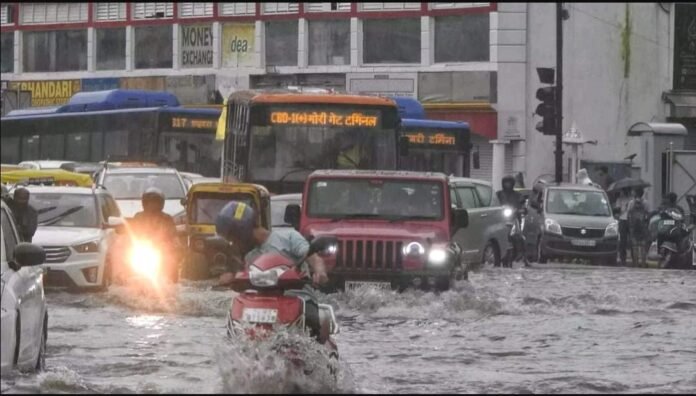In an extraordinary turn of events, Delhi NCR experienced an exceptional deluge, marking the heaviest two-day rainfall in July witnessed by the city in at least 41 years. This torrential downpour resulted in widespread chaos, bringing the bustling metropolitan area to a standstill. Tragically, the incessant rain claimed six lives and caused significant disruption to daily life.
Over the course of two days, the heavens opened up, unleashing a deluge that surpassed any recorded rainfall for the month of July in over four decades. The intensity and volume of rainfall caught residents and authorities off guard, leading to a series of challenges and overwhelming situations.
As the rain poured relentlessly, roads quickly transformed into waterlogged rivers, making commuting virtually impossible. Vehicular traffic ground to a halt, causing immense inconvenience for commuters, who found themselves stranded in flooded streets. Public transportation systems struggled to function, compounding the difficulties faced by the populace.
The heavy rainfall also wreaked havoc on the city’s infrastructure. Many low-lying areas and neighborhoods experienced severe waterlogging, resulting in the flooding of homes and businesses. Power outages were reported in various parts of the city, further exacerbating the hardships faced by residents. Rescue operations were launched on an urgent basis to assist those trapped in inundated areas.
Local authorities, along with emergency services and civic agencies, worked tirelessly to mitigate the impact of the unprecedented rainfall. Efforts were made to pump out water from flooded areas and clear debris from roads to restore normalcy. However, the magnitude of the rainfall and its aftermath posed significant challenges, testing the resilience and resources of the city’s administration.
During this tumultuous period, the loss of six lives was reported, a tragic reminder of the risks associated with extreme weather events. The victims’ families and loved ones mourn their untimely loss, while the entire community grapples with the aftermath of the disaster.
The heavy rainfall also impacted the daily lives of Delhi NCR’s residents. Schools, colleges, and offices remained shut, as authorities prioritized the safety of individuals and focused on relief efforts. The economic impact of the disruption caused by the rain is expected to be substantial, with businesses suffering losses due to forced closures and interrupted operations.
As the city gradually recovers from the aftermath of this unprecedented event, a collective effort is needed to assess the vulnerabilities exposed by such heavy rainfall and strengthen preparedness and response mechanisms. Climate change, urban planning, and drainage infrastructure are among the critical aspects that must be thoroughly evaluated to ensure greater resilience in the face of future extreme weather events.
The recent deluge in Delhi NCR serves as a stark reminder of the increasing frequency and intensity of extreme weather events across the globe. It underscores the urgent need for comprehensive measures to adapt to and mitigate the effects of climate change. Efforts must be intensified to build sustainable and resilient cities that can withstand the challenges posed by nature’s unpredictability.
In the wake of this unprecedented rainfall, the people of Delhi NCR rally together, supporting one another and demonstrating remarkable resilience. It is a testament to the indomitable spirit of the community that, in times of adversity, they unite to rebuild and forge ahead, determined to overcome the challenges brought forth by nature’s forces.

